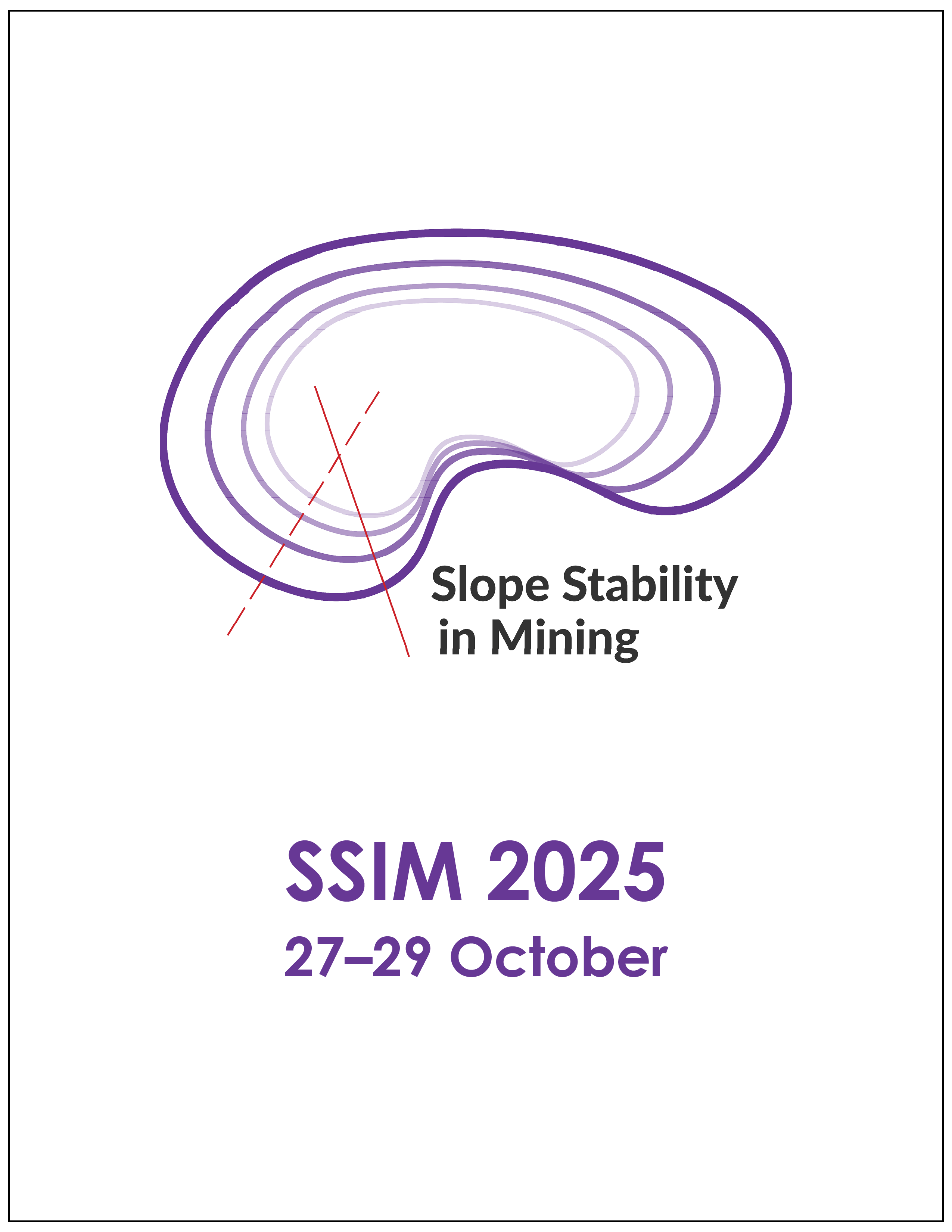3D block stability analysis of rock slope in Pilbara iron ore operations

|
Authors: Ahenkorah, I; Hinks, S; Cooper, A |
DOI https://doi.org/10.36487/ACG_repo/2535_34
Cite As:
Ahenkorah, I, Hinks, S & Cooper, A 2025, '3D block stability analysis of rock slope in Pilbara iron ore operations', in JJ Potter & J Wesseloo (eds), SSIM 2025: Fourth International Slope Stability in Mining Conference, Australian Centre for Geomechanics, Perth, https://doi.org/10.36487/ACG_repo/2535_34
Abstract:
The lithostratigraphic conditions in the Pilbara region of Western Australia are characterised by complex structural features resulting from multiple deformation events leading to significant folding, faulting, jointing/discontinuities, and unfavourable bedding orientations. These complexities present challenges in open pit iron ore mining as they can trigger slope instabilities with considerable safety and economic implications. Improved confidence in stability assessments of large rock slopes can be achieved through a better understanding of the persistence, distribution, and location of unstable blocks within the slope, utilising true 3D geometry. This paper examines the 3D block stability of a planar sliding failure in an open pit iron ore mine using Rocscience RocSlope3. Joints measured via an unmanned aerial vehicle photogrammetry mapping campaign (verified with in-field mapping data) were modelled as planar surfaces, incorporating their orientation, location, and properties (shear strength, persistence and waviness). The limit equilibrium method was applied to assess the stability of each block, predict potential failure locations and magnitudes, and generate heat maps indicating areas with the lowest Factors of Safety, largest failure volumes, and greatest depths. The results demonstrated that valid unstable blocks were formed by intersecting discontinuities, with failure initiated by daylighting and the detachment of blocks. The predicted location and volume of failed blocks, with a Factor of Safety below 1.0, aligned with bench crest failures observed in the field. Overall, the 3D block stability analysis method using Rocscience RocSlope3 offers a promising approach for identifying potential bench crest failures, multi-bench failures, and conducting global slope risk assessments in open pit rock slopes.
Keywords: open pit, slope instability, block stability, kinematic analysis
References:
Bekele, A & Meten, M 2023, ‘Modeling rock slope stability using kinematic, limit equilibrium and finite-element methods along Mertule Maryam–Mekane Selam road, central Ethiopia’, Modeling Earth Systems and Environment, vol. 9, no. 2,
pp. 1559–1585.
Bonilla-Sierra, V, Elmouttie, M, Donzé, FV & Scholtes, L 2017, ‘Composite wedge failure using photogrammetric measurements and DFN-DEM modelling’, Journal of Rock Mechanics and Geotechnical Engineering, vol. 9, no. 1, pp. 41–53.
Dixon, RA, Johnson, TM, de Graaf, PJH, Wessels, SDN & Venter, J 2011, ‘Risk based geotechnical slope reconciliation at Rio Tinto Iron Ore, Pilbara Operations’, Proceedings of the 2011 International Symposium on Rock Slope Stability in Open Pit Mining and Civil Engineering, Canadian Rock Mechanics Association, Alexandria.
Goldstein, D, Pace, R, Jung, JD, Young, D & Le Roux, KA 2023, ‘Framework to predict open pit mine failure runout’, in PM Dight (ed.), SSIM 2023: Third International Slope Stability in Mining Conference, Australian Centre for Geomechanics, Perth, pp. 629–638,
Khanna, R & Dubey, RK 2021, ‘Comparative assessment of slope stability along road-cuts through rock slope classification systems in Kullu Himalayas, Himachal Pradesh, India’, Bulletin of Engineering Geology and the Environment, vol. 80, no. 2, pp. 993–1017.
Mensah, EK, Hammah, R, Basahel, H & Mitri, H 2025, ‘Discrete fracture network application to rock slope engineering’, Journal of Industrial Safety, vol. 2, no. 1, pp. 47–64.
Pradhan, SP & Siddique, T 2020, ‘Stability assessment of landslide-prone road cut rock slopes in Himalayan terrain: a finite element method based approach’, Journal of Rock Mechanics and Geotechnical Engineering, vol. 12, no. 1, pp. 59–73.
Rocscience Inc 2004, Dips – Graphical and Statistical Analysis Software for Orientation Data, version 8.029, computer software, Toronto, https://www.rocscience.com/software/dips
Rocscience Inc 2023, RocSlope3 – 3D Block Stability Risk Assessment Software for Rock Slopes, version 1.007, computer software, Toronto, https://www.rocscience.com/software/rocslope3
Sun, J, Ning, Y & Zhao, Z 2011, ‘Comparative study of Sarma’s method and the discontinuous deformation analysis for rock slope stability analysis’, Geomechanics and Geoengineering, vol. 6, no. 4, pp. 293–302.
Trendall, AF & Blockley, J G 1970, ‘The iron formations of the Precambrian Hamersley Group, Western Australia’, Geological Survey of Western Australia Bulletin, vol. 119, pp. 365.
© Copyright 2025, Australian Centre for Geomechanics (ACG), The University of Western Australia. All rights reserved.
View copyright/legal information
Please direct any queries or error reports to repository-acg@uwa.edu.au
View copyright/legal information
Please direct any queries or error reports to repository-acg@uwa.edu.au

